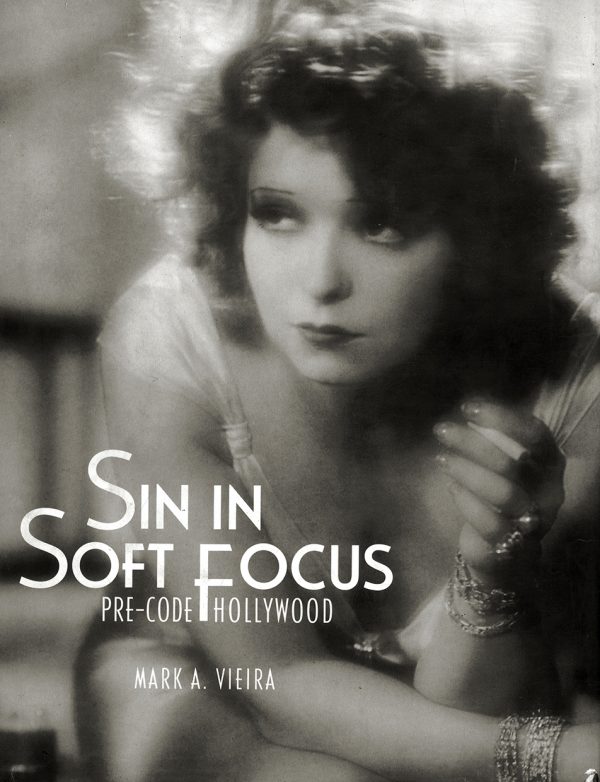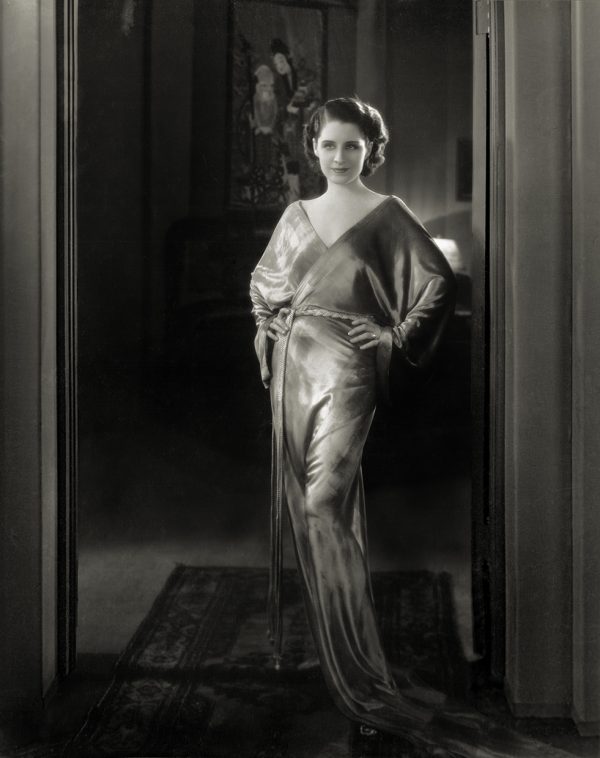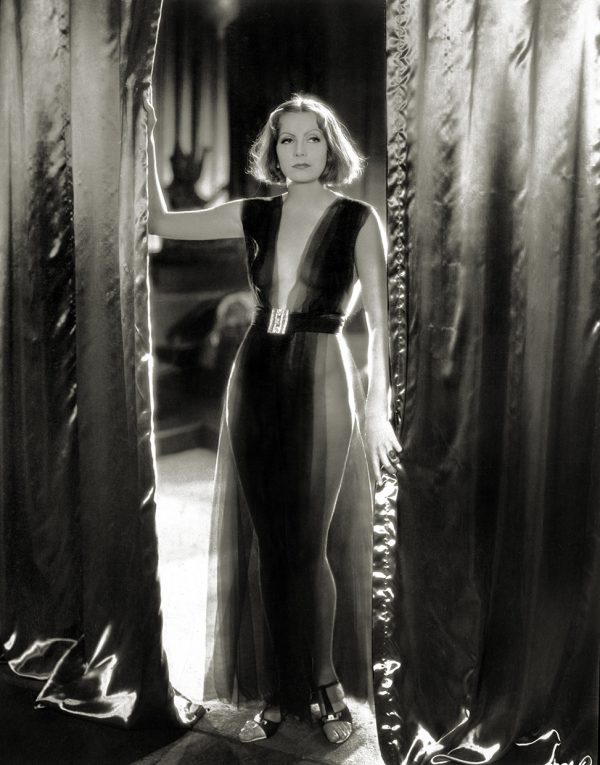I was gifted the new book by Mark Vieira, Forbidden Hollywood: The Pre-Code Era (1930-1934). When Sin Ruled the Movies, when picking up my press credentials to cover the 10th TCM Classics Film Festival. Then I interviewed the author, in the offices of the Hollywood Foreign Press Association, and I discovered a like-minded soul. Like me, Mark is passionate about classic Hollywood cinema, he is a photographer and knows how to restore vintage photographs. So I asked him more questions during a second talk, and this is what I learnt.
 In 1999 Mark had written a previous book on the subject, Sin In Soft Focus: Pre-Code Hollywood, which is now out of print. But he had never stopped researching, so he had more material, and proposed the idea for another book to Turner Classic Movies, the publisher of his 2016 book, Into the Dark: The Hidden World of Film Noir, 1941-1950.
In 1999 Mark had written a previous book on the subject, Sin In Soft Focus: Pre-Code Hollywood, which is now out of print. But he had never stopped researching, so he had more material, and proposed the idea for another book to Turner Classic Movies, the publisher of his 2016 book, Into the Dark: The Hidden World of Film Noir, 1941-1950.
Mark said that between 1918 and 1930, local censorship boards would cut out from the film prints scenes that were considered offensive in Middle America, but not on the East and West Coast cities of Los Angeles and New York with more sophisticated audiences. On March 31, 1930, Will Hays, head of the MPPDA (Motion Pictures Producers and Distributors of America), agreed to the Production Code (created by Jesuit priest Daniel Lord and Catholic magazine editor Martin Quigley), moral guidelines about what was acceptable to include in films. Prohibited were “profanity, violence, nudity, illegal drugs, provocative dancing, lustful kissing, sexual congress, sex perversion, white slavery, miscegenation.”
To avoid the threat of federal censorship, the studios could have cooperated with the Code, but they felt that, if they didn’t put sexy scenes in their movies, no-one was going to come and see them and they were going to go bankrupt, particularly during the Depression, when people had trouble coming up with the 25 cents for the price of a ticket. So in 1934 the Catholic Legion of Decency launched a boycott of all films. Bishops and priests and pastors in Chicago, Philadelphia, Boston, got up on the pulpit on Sunday and said, “Under pain of mortal sin you are not to attend any motion picture this week,” not even innocent movies like Little Women with Katherine Hepburn.
What this accomplished was that these huge 2000 to 5000 seats theaters, called picture palaces, in big cities with Catholic populations, especially Chicago, were empty and no money was coming in. That is why the studios capitulated, on June 13, 1934 they signed a document that was the strengthened version of the 1930 Production Code. Each movie had to carry a seal of approval signed by Joseph Breen. A devout Catholic, Breen really believed that the souls of children were in danger from seeing a bad movie.
This code lasted until 1968, when the MPAA (Motion Pictures Association of America) introduced the current ratings system. The Catholic theology was imposed on an entire country for 34 years. And many of these Pre-Code films, concludes Mark Vieira, were not trashy, they were works of cinematic art.

After reading Forbidden Hollywood and another book Mark Vieira wrote in 2005, Greta Garbo: A Cinematic Legacy (also out of print but available used), I was saddened to discover that, even during the more lenient Pre-Code period, 1930 to 1934, the SRC (Studio Relations Committee), headed by Colonel Jason Joy and Doctor James Wingate, reviewed movie scripts and finished prints, requesting scenes to be deleted, and state censor board continued to cut scenes. Here are a few examples.

Mae West had come to Hollywood from Broadway, where she wrote, directed and performed her own sexy plays. When Paramount hired her to adapt her 1928 play Diamond Lil for the screen, Will Hays forbid it. The title of the movie was changed to She Done Him Wrong (1933), but the plot remained the same, Gay Nineties saloon singer Lady Lou gets what she wants from her many male admirers. James Wingate cut some lines from the finished film.

Norma Shearer proved to her husband, Irving Thalberg, head of MGM studios with Louis B. Mayer, that she could look sexy enough to star in The Divorcee (1930) by asking the then unknown George Hurrell to photograph her in seductive poses, but Hays extracted a promise that no mention would be made of the book the movie was based on, Ex-Wife. The plot focused on the double standard, that a husband could cheat on his wife, but she was not allowed to get even.
Jean Harlow plays an amoral girl in Red-Headed Woman (1932) but Thalberg convinced Joy that it was a broad comedy and audiences would laugh at her. Massachusetts and Pennsylvania cut her affair with the chauffeur (Charles Boyer)

In Grand Hotel (1932), also starring Greta Garbo, John and Lionel Barrymore, Joan Crawford plays a stenographer who agrees to sleep with a businessman (Wallace Beery) for money, but the bedroom scene, as Jason Joy had predicted, was cut by censor boards in New Jersey and Pennsylvania.
Greta Garbo kisses her lady-in-waiting in Queen Christina (1934), but when MGM submitted the script to the SRC, Wingate warned them to avoid anything which “might be construed as lesbianism.” Garbo’s bedroom scene with Ramon Novarro in Mata Hari (1931) was shot but later cut.

If the censorship of these works of art was bad before 1934, it got infinitely worse after the Breen seal was imposed. Queen Christina was totally banned and it would not be seen again until 1957, when many of these classic films where shown on television, and when Mark learnt to love them as boy. Other movies were re-released after “offensive” scenes were cut from the original master negatives, so they could never be seen again. This is the fate suffered by movies starring Marlene Dietrich and directed by Josef von Sternberg, Morocco (1930), Blonde Venus (1932), Shanghai Express (1932).
As someone who was raised Catholic in Italy, and renounced those beliefs at 16, after reaching the age of reason, this is another “sin” that I have now added to the long list that I consider this religion guilty of, along with the abuse of young boys by celibate priests. They censored my favorite art form, the cinema.

I will add that the wonderful classic photographs that illustrate this article (and all of his books) were lovingly restored by Mark Alan Vieira himself. He says, “Every image in the book was scanned, resized, formatted, fixed up, enhanced by me. So to write a book about Pre-Code movies you have to be raised Catholic, and you have to be a photographer who knows Adobe Photoshop.”
In 1997, Mark wrote the book George Hurrell’s Hollywood. Glamour Portraits 1925-1992. In his Starlight Studio, in the historic Granada building where Hurrell had his first studio, he shoots glamour portraits with old-fashioned film stock and a large format 4×5 camera.
